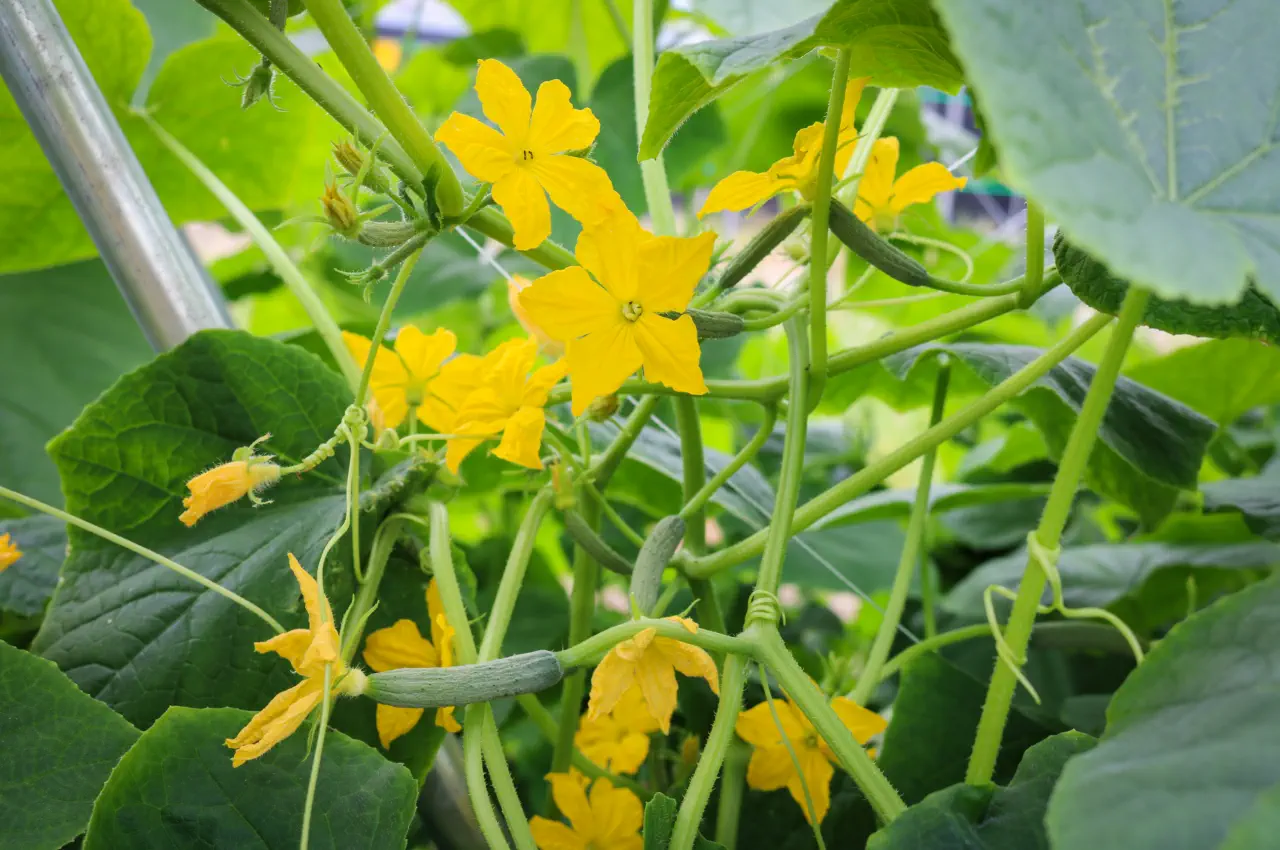Blight can wipe out your crop. Choosing the right blight resistant seed potatoes is crucial for a healthy harvest.
Read on to find out the top varieties of blight resistant seed potatoes that will save your yield....

The uninitiated might wonder what a word like ‘Parthenocarpic’ has to do with cucumbers. For that matter, they might similarly scratch their heads when they learn that other fairly obscure words such as ‘Monoecious’ and ‘Gynoecious’ are also used to describe certain types of cucumbers. These terms simply refer to the gender and flowers, which can be found on different varieties of cucumber plants.
Monoecious cucumbers for example, will produce both male and female flowers on the same plant. Gynoecious cucumbers will produce only female flowers and therefore will need to be planted close to male pollinating plants. However, Parthenocarpic cucumbers, which also produce female only flowers but don’t need to be pollinated. The result is, they produce seedless or virtually seedless fruits. For this reason, it’s easy to immediately see the advantage of growing Parthenocarpic cucumbers over other types.
Parthenocarpic cucumbers are hybrids and because the cucumbers from these plants produce very few seeds, they are generally more expensive to produce. The upside is you can expect a bigger crop of tasty, almost fully fleshed cucumbers, with virtually no seeds. The real benefits to the grower is that Parthenocarpic cucumbers can be successfully grown under cover, where exposure to insect pollination is much less likely.
Cucumbers that are grown in a protected environment, such as a greenhouse or poly-tunnel, will very often be of a higher quality than those grown outdoors. Commercially, they are much more acceptable to the market but amateur growers can also benefit in knowing that their Parthenocarpic cucumber plants will produce excellent fruits without requiring any pollinating intervention from them.
Another benefit of Parthenocarpic cucumbers, which are grown under cover, is they can be harvested over a longer period, right up until the first frosts. During the growing season they are often picked when not fully mature, encouraging more flowers to be produced, more often. It’s easy to see why some of the best pickling cucumbers are grown from Parthenocarpic cucumber plants.
The growing habit of Parthenocarpic cucumbers favours all types of upright supports, especially trellis. This will permit the plants to grow tall, which also makes them particularly suitable for growing in high sided tunnels.
These mini cucumbers can be harvested at a petite length of about 10 cm,.....
Packet Content: 5 Seeds
Cucumber Mini Munch produces a high yield of 'snack sized' fruits.....
Packet Content: 5 Seeds
Cucumber Party Time produces a high yield of 'snack sized' fruits.....
Packet Content: 5 Seeds
If you consider the advantages and disadvantages of growing Parthenocarpic cucumbers, the only disadvantage is probably the cost of the seed. The overwhelming advantages include:
● An almost guaranteed bountiful harvest due to female only flowers that do not need to be pollinated.
● No need for intervention in the pollination process or with encouraging pollinating insects.
● A longer growing season due to plants being under cover and allowed to grow to their full potential.
● Parthenocarpic cucumbers are more likely to have smooth skins, making them ideal for slicing and no need for peeling.
● They are also perfect for pickling.
What is your favourite cucumber variety? Leave a comment below and let everyone know....
All blog content on this page is copyright of SimplySeed and is not to be reproduced without prior written permission. ©
Well, that's something I didn't know! But is it magic? If the cucumber does not produce seeds, how do you get the seeds to sell to us to grow cucumbers that don't have seeds?